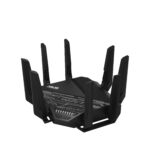Cloning a hard drive in Windows is a useful skill for backing up data or upgrading to a new storage device. The process involves creating an exact copy of one drive onto another, preserving all files, settings, and the operating system. This can save time when setting up a new computer or recovering from a system failure.
Several tools are available for cloning hard drives in Windows. Free options like Macrium Reflect offer user-friendly interfaces for beginners. Paid software may provide additional features for advanced users. The choice depends on individual needs and technical expertise.
Cloning from an HDD to an SSD is a common upgrade path. It can significantly improve a computer’s performance by taking advantage of the SSD’s faster read and write speeds. Users should ensure the destination drive has enough capacity to hold all the data from the source drive before starting the cloning process.
Cloning a Hard Drive in Windows: A Step-by-Step Guide
Cloning a hard drive creates an exact copy of your entire drive, including the operating system, applications, files, and settings. This is useful for upgrading to a new drive, backing up your system, or transferring your data to a new computer. Here’s how to clone a hard drive in Windows:
1. Choose a Cloning Software
Windows doesn’t have a built-in cloning tool, so you’ll need third-party software. Popular options include:
- Macrium Reflect: A free and reliable option with a user-friendly interface.
- EaseUS Todo Backup: Offers a free version with basic cloning features and a paid version with advanced options.
- Clonezilla: A powerful open-source tool with more advanced features, but it has a steeper learning curve.
2. Connect the Target Drive
Connect the drive you want to clone to (the target drive) to your computer. Ensure it has at least the same capacity as the source drive (the drive you’re cloning from).
- Internal Drive: If it’s an internal drive, connect it to an available SATA port on your motherboard.
- External Drive: If it’s an external drive, connect it via USB.
3. Install and Launch the Cloning Software
Download and install your chosen cloning software. Launch the application and select the cloning option.
4. Select the Source and Target Drives
Identify and select the source drive (the drive you want to clone) and the target drive (the drive you want to copy to). Double-check to avoid accidentally cloning to the wrong drive.
5. Configure Cloning Options
Most cloning software offers various options:
- Sector-by-sector clone: Copies every sector of the source drive, including unused space. This creates an exact replica but takes longer.
- File-level clone: Copies only the used space, which is faster and more efficient.
- Partition resizing: Allows you to adjust the partition sizes on the target drive.
Choose the options that best suit your needs.
6. Start the Cloning Process
Initiate the cloning process. The duration will depend on the size of your drive and the cloning method you choose.
7. (Optional) Boot from the Cloned Drive
Once the cloning is complete, you can test if it was successful by booting your computer from the cloned drive.
- Change Boot Order: Enter your computer’s BIOS/UEFI settings (usually by pressing DEL or F2 during startup) and change the boot order to prioritize the cloned drive.
- Boot and Verify: If your computer boots successfully from the cloned drive and everything works as expected, the cloning process was successful.
Important Notes
- Back Up Your Data: Before cloning, back up any important data to an external drive or cloud storage as a precaution.
- Target Drive Formatting: Some cloning software requires you to format the target drive before cloning. Ensure you have any necessary data backed up from the target drive before formatting.
- GPT and MBR: Be aware of partition table formats (GPT and MBR). If your source drive uses GPT, the target drive should also use GPT, and vice versa.
Cloning a hard drive can seem daunting, but with the right tools and careful execution, it’s a manageable process that can save you time and effort when upgrading or migrating your system.
Key Takeaways
- Cloning creates an exact copy of a hard drive, including the operating system and all files
- Both free and paid software options are available for cloning in Windows
- Upgrading from HDD to SSD through cloning can boost system performance
Understanding the Basics of Hard Drive Cloning
Hard drive cloning creates an exact copy of a disk’s contents. This process transfers all data, including the operating system, applications, and files, to a new drive.
Defining Disk Cloning and Its Benefits
Disk cloning is the process of making an exact replica of a hard drive. It copies all data, including the operating system, applications, and personal files. This method is useful for:
• Upgrading to a larger drive
• Switching from a hard disk drive (HDD) to a solid-state drive (SSD)
• Creating a backup of your entire system
Cloning a hard drive ensures that the new drive is bootable and contains all your data. It saves time compared to manually reinstalling the operating system and programs.
Benefits of cloning include:
- Quick system recovery after hardware failure
- Easy transfer of data to a new computer
- Creation of multiple identical systems for testing or deployment
Comparing Cloning to Regular Backups
Cloning differs from regular backups in several ways:
- Cloning creates an exact copy, while backups typically store selected files and folders.
- Cloned drives are usually bootable, unlike most backups.
- Cloning is typically a one-time process, whereas backups are performed regularly.
Regular backups are best for:
• Protecting against data loss
• Storing multiple versions of files
• Saving space by excluding unnecessary files
Cloning is ideal when you need a complete system copy. It’s particularly useful for upgrading to a new drive or creating a failsafe system image.
Types of Hard Drives and File Systems
Hard drives come in two main types:
Hard Disk Drives (HDDs): Use spinning platters to store data. They offer large capacities at lower costs.
Solid-State Drives (SSDs): Use flash memory for faster performance and higher reliability.
Common file systems include:
• NTFS: Windows standard, supports large files and partitions
• FAT32: Compatible with most devices, but has file size limitations
• exFAT: Combines NTFS and FAT32 features, good for external drives
When cloning a hard drive, ensure the destination drive has enough capacity. SSDs often require different cloning procedures than HDDs due to their structure.
Step-by-Step Guide for Cloning a Hard Drive
Cloning a hard drive involves creating an exact copy of all data, including the operating system, applications, and files. This process requires specific tools and careful preparation to ensure a successful transfer.
Required Tools and Software for Cloning
To clone a hard drive, users need reliable cloning software. Popular options include Macrium Reflect Free, Acronis, and Clonezilla. These programs offer user-friendly interfaces and robust features.
A spare hard drive or SSD is essential as the destination for the cloned data. This drive should have equal or greater capacity than the source drive.
For external drives, an enclosure or USB adapter may be necessary to connect to the computer.
Key tools:
- Cloning software
- Destination drive
- SATA or USB cables
- Screwdriver (if opening the computer case)
Preparing the Source and Destination Drives
Before cloning, it’s crucial to prepare both drives. Users should back up important data from the source drive to prevent potential loss.
The destination drive needs formatting to ensure compatibility. Most cloning software can handle this step automatically.
Steps to prepare drives:
- Back up critical data
- Clean up unnecessary files on the source drive
- Defragment the source drive (for HDDs)
- Connect the destination drive
- Update cloning software to the latest version
Executing the Cloning Process
The cloning process varies slightly depending on the software used. Generally, users select the source and destination drives within the cloning program’s interface.
Cloning options may include choosing specific partitions or cloning the entire disk. For most users, a full disk clone is recommended.
After initiating the clone, the process may take several hours depending on the amount of data. It’s important not to interrupt the procedure.
Once complete, users should verify the cloned drive’s functionality by booting from it or checking its contents.







